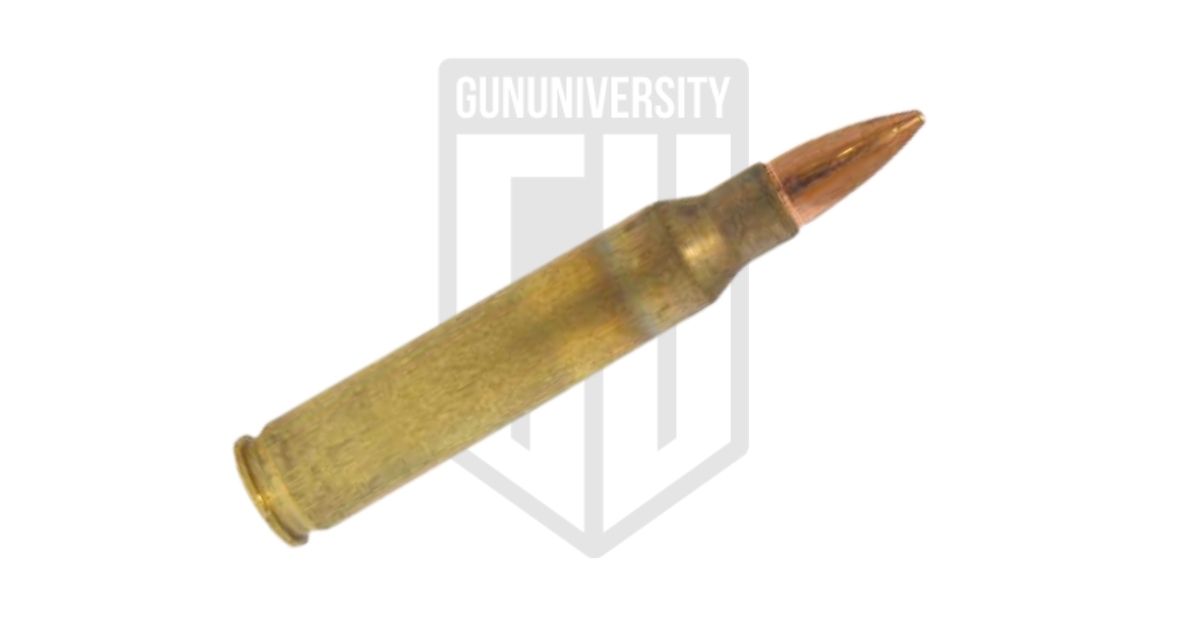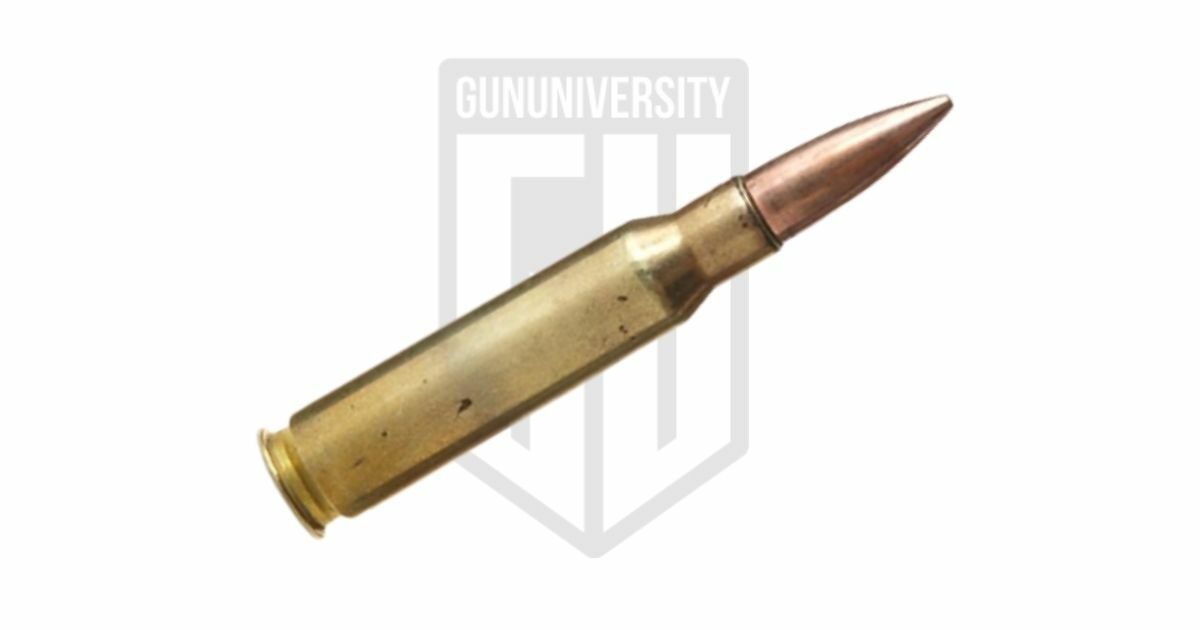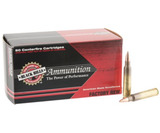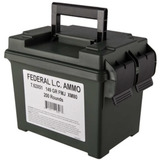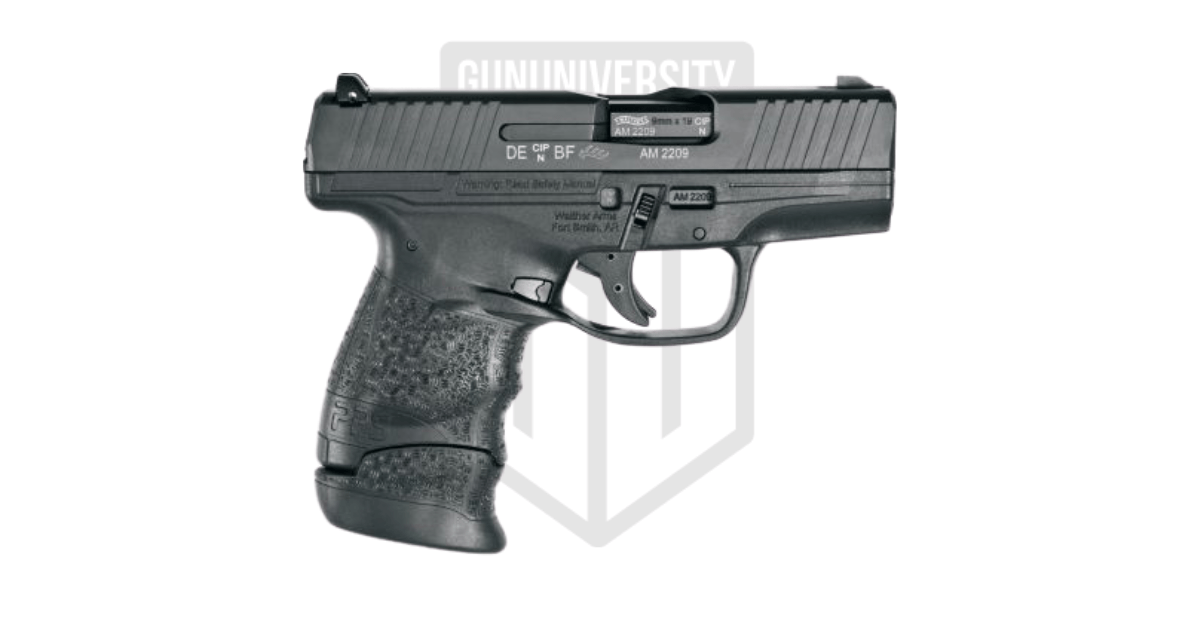5.56 vs 7.62: Which NATO Rifle Round is the Best?
Two cartridges as American as apple pie, the Big Mac, and heart disease are the 5.56 NATO and the 7.62 NATO. America is a nation of riflemen, and we love our domestically produced rifle cartridges. The 5.56 NATO and the 7.62 NATO are beloved rounds and have directly competed for years. Our goal today is to settle that debate, 5.56 NATO vs 7.62 NATO.
5.56 vs 7.62 Spec Comparison
| Spec | 5.56 NATO | 7.62 NATO |
|---|---|---|
| Bullet Weight | 36 to 77 GR | 110 to 180 GR |
| Bullet Diameter | .224" | .308" |
| Case Length | 1.76" | 2.015" |
| Max Overall Length | 2.26" | 2.8" |
| Case Capacity | 28.5 gr H2O | 56 gr H2O |
| Max Pressure | 62,366 PSI | 62,000 PSI |
| Parent Case | .222 Remington | .300 Savage |
Why 5.56 vs 7.62?
Heck, the biggest why these rounds are so often compared is the fact these two rounds competed directly against each other during the Vietnam war. The 5.56 fought hard to replace the 7.62 NATO as America’s mainline battle cartridge, and within the United States military, it succeeded.
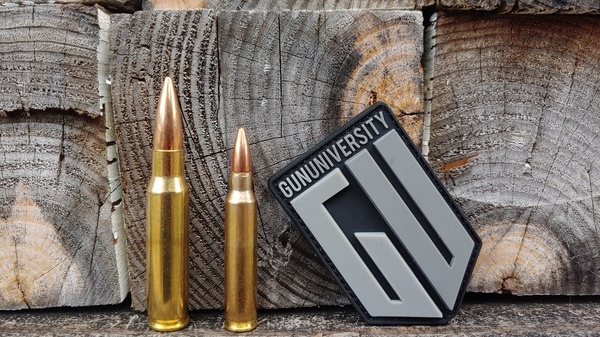
However, in the minds of many during Vietnam and up to this day the 7.62 NATO is the better cartridge for riflemen. This is the reason we have to do this rundown, this grudge match, this versus discussion.
On top of that, these are the two most prolific American rifle rounds still in widespread use in the military, in police forces, and in the hands of hunters and recreational shooters worldwide. These are military variants of two popular sporting rounds known as the 223 Remington and the 308 Winchester.
These two cartridges might as well be a set of brothers competing for attention, and the American gun-buying public might as well be their parents.
5.56 NATO Review
Let us start off with the 5.56 NATO. Below we are going to look into the history and purpose of this cartridge and the best ammunition for every situation.
History and Purpose
If there has ever been a controversial cartridge, it’s the 5.56. The cartridge was created from the 223 Remington and designed to replace the 7.62 NATO as the infantry rifle round of choice. The M14 proved to be unwieldy, and the 7.62 NATO had too much recoil for modern infantry operations. The 5.56 and the M16 replaced the 7.62 NATO and the M14.
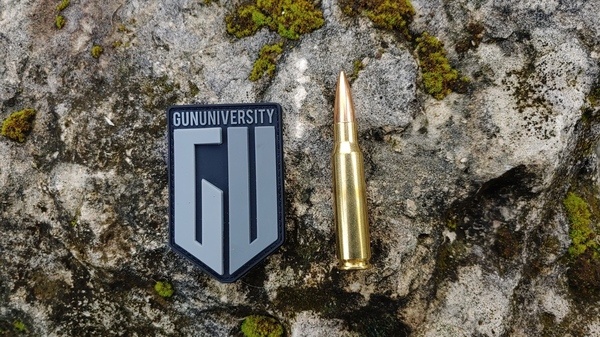
This little cartridge proved to be well suited for rapid-fire, for the shorter range of modern infantry engagements, and the lighter weight allowed the average grunt to carry more ammunition. The 5.56 NATO’s parent case, the 223 Remington, was developed in 1957 as a commercial hunting round.
The 5.56 NATO has various incarnations developed for different uses like short-barreled rifle rounds, armor-penetrating loads, tracers, and beyond. It serves to this day the military’s standard-issue cartridge. It serves in rifles, light machine guns, automatic rifles, and in designated marksman rifles.
Best 5.56 NATO Cartridges
7.62 NATO Review
Below we are going to look into the history and purpose of the 7.62 NATO cartridge and the best ammunition for every situation.
History and Purpose
America had just come off of crushing Nazi Germany and the Japanese empire with the mighty 30-06 cartridge. It was a proven round, but small arms development was happening rapidly, especially as the Cold War heated up. America sought a round that could keep up with changing times without sacrificing 30-06 power.

The 7.62 NATO round was born in 1954 and quickly made a good impression on military forces around the world.
The shorter 7.62 NATO allowed for a shorter and more efficient action for rifles and machine guns. The 7.62 NATO became the standardized cartridge for members of NATO nations. In the United States, the caliber premiered in the M14 and M60 machine gun. The round popped up in western European nations in the FN FAL and G3, as well as what’s, in my opinion, the finest medium machine gun ever, the FN MAG.
The 7.62 NATO may not have lasted long as a mainline battle rifle cartridge, but still serves today in machine guns, sniper rifles, and designated marksman roles.
Best 7.62 NATO Cartridges
Best for Hunting
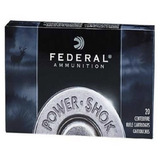
Federal 308 Powershok
Marketplace |
Cost |
| Natchez Shooter’s Supply | $0.97 |
| Brownells | $1.10 |
308 Vs. 223 Remington
We can’t do this article without mentioning the sporting cartridges that are both related to these military-grade rounds. The 5.56 is nearly identical to the 223 Remington, and the 7.62 NATO is nearly identical to the 308 Winchester. The 223 Remington and 308 Winchester are typically sporting rounds with specialized projectiles that allow for expansion to better and more humanely take game.
The 5.56 was derived from the 223 Remington. Rifles marked for 223 Remington should not chamber 5.56 rounds. The reason being varies depending on who you ask. The 5.56 is loaded to a higher pressure. Some say your gun might blow up, some say you’ll get stuck cartridges, but most people agree that you should use the ammo your weapon is made for. 5.56 rifles can chamber 223 Remington, and 223 Wylde can also chamber both 5.56 and 223 Remington.
The opposite occurred with the 7.62 NATO. The 308 Winchester was derived from the 7.62 NATO and converted to a sporting round. Also, they feature the inverse of the pressure issue. The 308 has more pressure. SAAMI does not consider it unsafe to load 308 rounds into 7.62 NATO rifles, but that’s a decision you’ll have to make. Most modern 7.62 NATO rifles are designed to handle 308 these days, but if your rifle is a bit older, you might want to pay more attention to it.
5.56 vs 7.62 Ballistic Comparison
The 5.56 NATO is a round capable of pushing out to 500 yards in a basic rifle platform. Marines equipped with beat-up M4s and M16A4s qualify on man-sized targets at 500 yards yearly. Past 500 yards, the rounds start to get a little funky performance-wise. There are lots of different 5.56 rounds with different projectile weights, and performance can vary.
To come up with these numbers, I used Shooter’s Calculator.
I used the M855 load to calculate these numbers. It’s a common and affordable option for 5.56 shooters. This round leaves the barrel at 2850 feet per second.
As a rule of thumb, 5.56 is dropping about 5 feet at 500 yards. At 600 yards, you are looking at 100 inches of drop. That’s a lot of drop, and at that range, the foot-pounds of energy are roughly a third of what it was at the muzzle.
The 7.62 NATO round is as equally diverse as the 5.56. There are tons of different loads for it, and I used the standard M80 load. This 147 grain round leaves the barrel at 2,800 feet per second.
At 500 yards, the round has dropped approximately 57 inches but retains an energy level of 1029 foot-pounds. At 600 yards, the drop is roughly 95 inches, but the round still retains 836-foot pounds of energy. It’s not until you step back to 1,000 yards that the muzzle energy drifts down as low as 5.56 at 500 yards.
Big versus small plays a big role in this ammo discussion, and it does so in multiple ways. This includes both physical size and performance. The 7.62 NATO is a bigger round that does offer more performance. The 5.56 is no slouch by any means and does well for an intermediate cartridge.
These numbers make it sound like the 7.62 NATO is the clear choice and the real winner here. There is more to consider than numbers popping out of a Shooter’s Calculator. Recoil and muzzle rise are a necessary part of the conversation as well.
Recoil and Muzzle Rise
As great as modern rifles and muzzle devices are, the 5.56 NATO will always be a lighter recoiling round than the 7.62 NATO. In semi-auto rifles, both are controllable and far from painful. In the AR series of rifles, both calibers are quite comfortable and controllable, but the difference is apparent.
The 5.56 is easier to control, recoils softer, and makes it easier to rapidly engage targets and put multiple rounds on target.
Concussion is a major difference when barrel lengths are compared. A 16 inch 5.56 barrel is much more comfortable than a 16 inch 7.62 NATO. The difference is almost night and day.
When you move out of semi-auto platforms and into bolt action rifles or single-shot rifles is when you notice a sharp increase in recoil. In these types of rifles, the 5.56 is much more comfortable. The 7.62 NATO or 308 in a manually operated rifle can be a bit of a shoulder thumper. The 5.56 is a tame kitten in comparison, especially if you are going for a muzzle brake free, ultra-lightweight rifle.
Rifle Selection
Both of these all American rounds offer you tons of different rifle options. The 7.62 NATO in the form of the 308 Winchester made it a very popular round for hunting, so it saw widespread acceptance in a wide variety of rifles. The 5.56’s success in the AR-15 meant it also experienced great success.
You can find rifles of all types in both calibers. It’s easy to find semi-auto tactical rifles, bolt action rifles, single shots, and heck Browning even made lever actions in both calibers. You can get almost anything you want in either caliber and be ready to rock and roll.
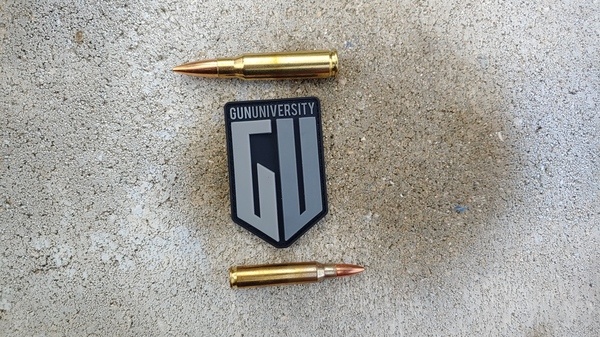
There are some slight differences. It’s much easier to find rifle caliber pistols in 5.56. AR 15 pistols are much more common than AR 10 pistols. AR 10, G3, and even FAL pistols exist, but due to lower demand and lower supply, the price is often higher.
Bolt action precision rifles in modern chassis systems like the Remington 700 Tactical or Ruger Precision rifle are more common in the 7.62 NATO caliber. I’m sure chassis fueled 5.56 rifles exist, but the 7.62 variants are much more common.
Size and Weight
It feels necessary to include this section since it was such a game-changer for the United States military. The weight difference between the 5.56 and 7.62 round is significant. A single round of 147 grain 7.62 NATO weighs .853 of an ounce, so 100 rounds weigh about 5.33 pounds. A 5.56 M193 round weighs .410 of an ounce, and 100 rounds weigh a mere 2.56 pounds.
The smaller 5.56 is lighter and shorter, and it takes less space to store. When you are packing a plate carrier full of ammo, the 5.56 makes a lot more sense. The lighter round means you can carry more ammo, and this was a tremendous advantage to GIs and can be a tremendous advantage for you.
As a man who carried 500 rounds of 7.62 NATO M80 linked, I can tell you that packing a rifle and 6 to 10 magazines is much more comfortable when it’s in 5.56.
Price
Without a doubt, 5.56 is much cheaper than 7.62 NATO. The 5.56’s outstanding popularity has given it a much larger fanbase and created tons of competition in manufacturing 5.56 ammo. It’s manufactured all over the world, and this drives down price. In 99% of situations, the 5.56 NATO round is the cheaper alternative.
The 1% of situations where 7.62 NATO is cheaper is when panic buying starts. Panic buying phenomenons strip the shelves bare of 9mm, 22 LR, and 5.56. As this occurs, prices rise, and these three calibers get real expensive real fast.
In 2020 I was able to find steel-cased 7.62 NATO priced cheaper than 5.56 for a short time period. The price of 7.62 NATO didn’t drop; it just didn’t rise as high as 5.56.
Outside of ammo prices, 5.56 seems to be the cheaper alternative all around. With the 5.56 being the caliber of America’s rifle magazines, ammunition loaders, and even rifles tend to be cheaper and more available in 5.56 than 7.62 NATO.
5.56 vs 7.62 Which is Best? – Our Take
There is no right answer in this debate. The calibers are very different and designed to be used for different purposes. Both do well at what they do, and both will be around for a very long time. Both rounds have been more than successful on the battlefield, in the tree stand, and on the range.

If you want the easy answer, let’s look at some common uses of modern rifles, and we can give you a better idea of what would work better.
Home Defense
The 5.56 in a modern semi-automatic rifle platform is the most effective self-defense platform for the majority of people. It’s easier to control, faster to make follow-up shots with and is a more affordable caliber to train extensively with.
Hunting
Hunting is a vague category, but for most people, the 308 will likely serve you better if you could only have one caliber and wanted to hunt a multitude of animals.
Small Game, Predators, and Whitetail Deer – The 5.56 is great for hunting everything whitetail deer size and below. The round makes short work of coyotes, prairie dogs, and even hogs. However, some states do not allow hunting with calibers smaller than 6mms.
Everything Else – The 7.62 NATO can effectively take just about everything in North America. I might not go hunt a Kodiak with it, but I wouldn’t feel under gunned with one either. A 308 can also take deer effectively, as well as predators like coyotes.
Long/Moderate Range Precision
This one is, without a doubt, the realm of the 7.62 NATO cartridge. Long-range is relative when cartridges exist that can reach out to a mile. When I say long range in this context, I mean 300 yards and beyond. The 7.62 NATO travels further and hits harder at these ranges.
The Difference between Pew and Pow
I love having options. I love guns, so when you ask me what cartridge I like over another, it can be a tough consideration.
Unless it’s 40 S&W, then I just don’t care.
On the subject of 7.62 NATO and 5.56 NATO, I couldn’t pick a favorite.
As a shooter who engages steel, paper, and polymer targets, I love the affordability, availability, and comfortable firing nature of 5.56.
And as a former machine gunner, I love the range and power offered by the 7.62 NATO.
The good news is, why choose one when I can have both?
Recent Posts
December 20, 2025
December 15, 2025
December 15, 2025
December 12, 2025

